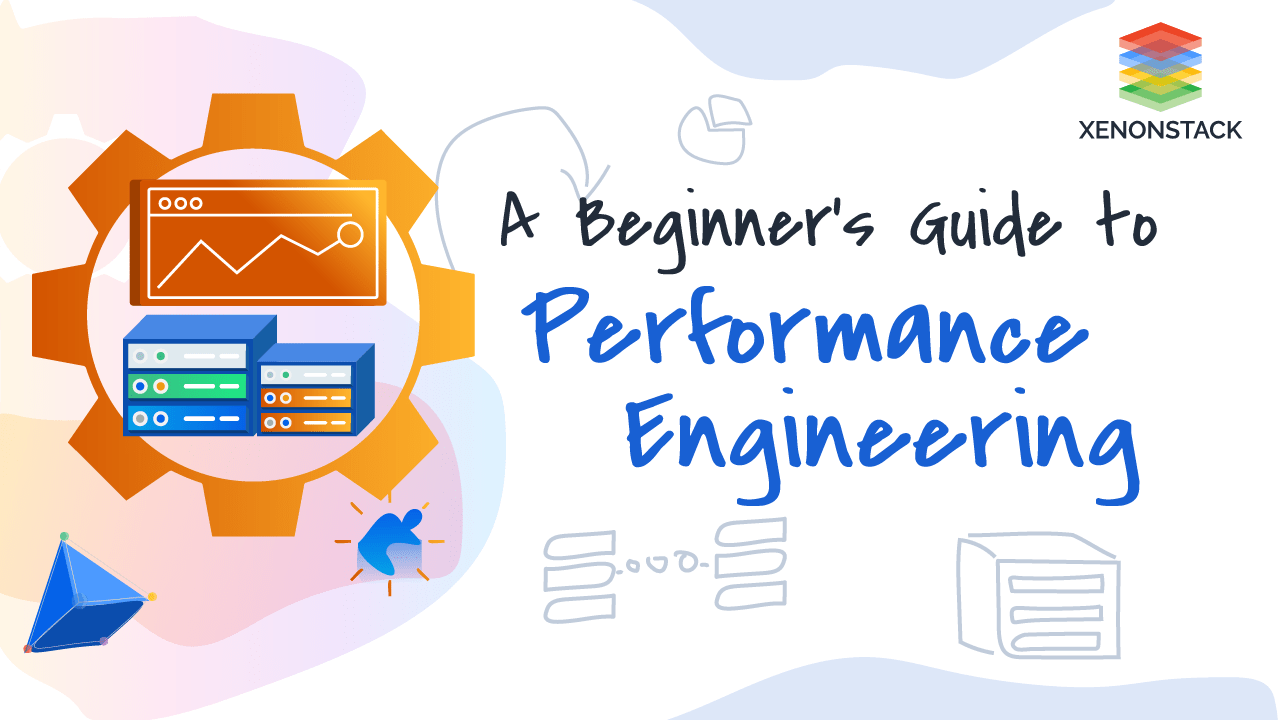
The Role of Performance Engineering in Modern Applications
Performance engineering is a proactive and supportive approach to testing and monitoring application development and performance. We know that software engineering is trying to make the best of its practices and implement innovative approaches to modernize its activities to enable better performance and enhanced customer experience.
That's where performance engineering steps into the game. With sophisticated toolkits and effective processes, while getting insights and feedback into the application operations, it shares the capabilities to build quality and performance throughout the organization with adaptable Site Reliability Engineering Principles and site reliability engineering best practices.
To identifies how all cores are being used either in case of going concurrent programming or going sequential way of programming. Click to explore about our, Performance Tracing Architecture
What is Performance Engineering?
Performance engineering is an application testing and monitoring approach to view the essential processes of software development activities while ensuring the development is on track and meets the objectives.
By enabling the site reliability engineering vs DevOps perspective and integrating SRE Solutions, organizations can enhance system resilience and optimize development workflows. The combination of site reliability engineering services and Automation Runbook for SRE ensures that repetitive tasks are automated, minimizing downtime and improving efficiency.
To automate repetitive tasks and identify bugs and risks from shift-left performance testing and monitoring usage, security checks, and overall performance to define system and SRE production support, Performance Engineering can ensure collaboration within teams and streamline the process based on business requirements. Additionally, leveraging Generative AI for DevOps can further improve predictive analysis, automate incident response, and enhance system reliability.
Continuous Monitoring produces information about an application’s performance and usage patterns. Click to explore about our, Observability vs Monitoring
Key Elements of Performance Engineering for Optimized Software Performance
Defining essential criteria for effective processes and project management could be done in advance to get started with it. Some of the key elements that should be taken into consideration are:
Identifying the Essentials
It starts with understanding the key components that drive business performance and important transactions—figuring out the information with collected data and evaluating the metrics, such as resource consumption, queries, and essential metrics.
Determining the service levels and infrastructure essentials associated with requirements constraints and application needs and defining the development cost.
Classifying and bifurcating the Workload
Analyzing the importance and degree of the workload and intelligently managing the tasks for optimal performance.
Setting up the Performance Model
Designing a performance model to monitor and test the development processes and application performance and identify the disruptions and irregularities in response to real-world traffic.
Execution of the Performance Model
Implementation of the model to identify the performance and the bottlenecks concerning real-world traffic conditions and optimizing with a risk-management approach to maintain service levels with a defined base or demands.
Analyzing the Results
Collecting insights on performance and achieved service level, Identifying the disruption and changes in the performance and development processes, and evaluating and deciding the actions to close the gaps.
Repeated Iterations
Continuous evaluation based on recent discoveries and updating the performance model with real-world performance parameters. To optimize the processes and enable faster service release, reliability, and scalability.
A tool that enables end users, administrators and organizations to gauge and evaluate the performance of a given system. Click to explore about our, Performance Monitoring
Addressing Software Challenges with Performance Engineering
The Software Engineering culture still needs to work with complicated systems and finds it challenging to work with legacy back-end codes and manage systems. Today the requirements are even more complex.
For example - While buying a travel ticket, selecting the date, type of convenience, and preferred seats and accommodation seems a facility to us, but for the developers to manage the features and functions with supporting browsers, mobile devices, and desktop applications while ensuring the performance is up to the mark. Performance engineering incorporates an agile methodology toward software development to approach the addressed performance in the development and delivery processes.
The need for it is so widely recognized, and the fact that now developers are not able to write bug-free code makes it easy for organizations to choose it without a second thought.
Let's review some aspects of performance engineering in any organization:
Ensuring Software Functionality
Software and services are continuously evolving with rising customer needs and market demands, and the much-needed flexibility needs to be improved. It enables software engineers to adopt innovative approaches to ensure user-friendliness and stability of the interfaces, with performance as the primary metric to monitor.
Enhanced UX and Service consistency
In Software Development practices, performance engineering is used to determine the traffic load capacity, stimulate production load, and service responsiveness to ensure a great user experience.
Reducing the cost factor (Software and Hardware)
With it, the software engineering team can plan testing at each level of development and fabricate an approach to optimize the services or software design. This lets the developers and organizations remove the elements such as technology investments and additional project costs to deliver better business value at reduced operational costs.
Risk Mitigation and Issues detection
Software Development processes, while being advanced in this current era, still leave some room for improvement, and the most common challenge is identifying vulnerabilities. It detects the bottlenecks in the software development process and indicates the need for improvement in the hardware and software for enhanced scalability and resilience.
Performance testing is to determine and identify any performance-related issues or bottlenecks in the application under test. Click to explore about our, Performance Testing Tools
Top Reasons to Adopt Performance Engineering for Business Success
Performance engineering is commonly implemented for the following two reasons:
-
Eliminating the rework and refractoriness of the application in the latter stages of development.
-
Ensuring the application performance is better and consistent to build a base for further applications.
Here are some benefits that come with the implementation of performance engineering:
End-to-End Optimization
It enables the development team to optimize its approach, implement a monitoring and testing strategy, enhance the service credibility, and allow the deployment of applications with ease and stability.
Benchmarking Performance criteria
With proactive testing and monitoring processes on the go, the performance criteria can be determined to mark the processes and set the benchmark to employ efficiency operations to stay ahead of the trends and utilize data to keep consistency in the overall performance.
Automation
To run the tests, automation of CI/CD pipelines allows for fast and effective risk management and remediation practices and enables a seamless software development experience. This makes it easy to work among cross-functional cycles.
Reporting and Analysis
Reporting and analyzing system issues enables the organization to monitor the tests and optimize processes for future implementation. It allows better team collaboration and provides insight to managers who are not performance testers.

Key Takeaways from Performance Engineering Implementation
The main objective of performance engineering is to modernize the software development methodology and help the development team with sophisticated toolkits and seamless development experience to utilize the expertise in detecting and solving performance errors. Eventually, it will become a trend, and legacy operations will phase out. With the customer's intent and performance expectations, performance engineering will synthesize monitoring and testing to provide optimal results with software development.
Next Steps in Implementing Performance Engineering in Your Organization
Talk to our experts about implementing Performance Engineering and SRE Solutions. Learn how industries and different departments leverage Automation Runbook for SRE and site reliability engineering best practices to enhance system reliability and optimize IT operations. Utilize Generative AI for DevOps to automate and improve SRE production support, boosting efficiency and responsiveness.
.webp?width=1921&height=622&name=usecase-banner%20(1).webp)


